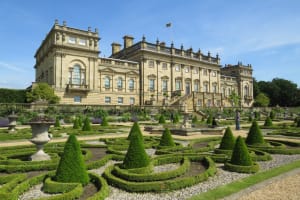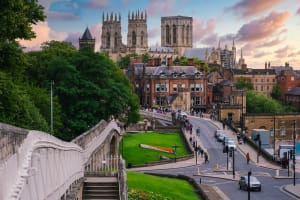
Fountains Abbey is a Cistercian monastery in North Yorkshire, England. It was founded in 1132 and is located near the town of Ripon. The abbey was one of the wealthiest in England until its dissolution in 1539, and its ruins are now a popular tourist attraction and a UNESCO World Heritage Site.
The abbey was built on the site of a former hunting lodge and chapel, and was established by 13 monks who were expelled from the Benedictine monastery of St. Mary's in York for their strict adherence to the rule of St. Benedict. The monks were led by Thurstan, Archbishop of York, who granted them land in the valley of the River Skell.
Over the centuries, the abbey grew in size and wealth, and by the 15th century, it was one of the largest and richest in England. The abbey's prosperity was based on sheep farming and wool production, as well as lead mining and quarrying.
The abbey was dissolved in 1539 during the reign of Henry VIII, as part of the English Reformation. The monks were expelled, and the abbey's lands and buildings were seized by the crown. The site was eventually sold to a local merchant, who turned it into a country estate.
Today, the ruins of Fountains Abbey are one of the most impressive examples of medieval monastic architecture in England. The site includes the remains of the church, cloisters, chapter house, and dormitory, as well as the mill, which was built in the 12th century and still produces flour today. The grounds also include a deer park, water gardens, and a tea room. Visitors can take guided tours of the abbey and explore the site on their own.
Explore Near Fountains Abbey
Discover 5 attractions, 5 cities, and 2 airports within 75km. Perfect for planning day trips, finding connecting flights, or discovering new destinations to explore during your visit.
Nearby Attractions & Places to Visit
5 destinations within 23.9km - 36.8km from your location





Nearby Cities Worth Exploring
5 destinations within 13.5km - 36.9km from your location
Airports Near Fountains Abbey
2 destinations within 27.6km - 45.5km from your location
Cross-Border Adventures Near Fountains Abbey
Discover cross-border adventures near Fountains Abbey. Explore neighboring countries with similar attractions and extend your travel experience across borders.
